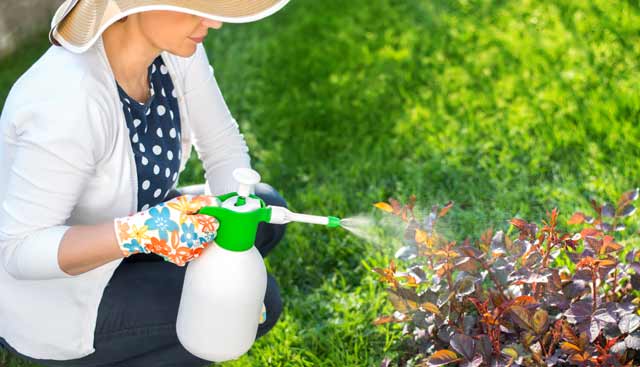
Tips to Protect Your Skin Against Melanoma, Other Skin Cancers
Skin cancer is the most common type of cancer in the United States. Each year, more than 3.5 million cases of skin cancer are diagnosed, that’s one in five Americans who will develop some form of the disease throughout their lifetime.
Like all cancers, early detection of melanoma is critical. If caught early, the five-year survival rate is 98 percent.
If you’re going to be outside, Moffitt experts recommend Sun Smart and SunWise UV index apps as a reminder to keep your skin in check.
Here are 10 easy sun-safety tips to better protect your skin from cancer:
1. Seek shade
- Try to avoid the sun during peak hours — between 10 a.m. and 4 p.m. is when the UV light is strongest
- If you are unsure how strong the sun's rays are, use the shadow test: if your shadow is shorter than you are, the sun's rays are the strongest
- As a reminder, some UV rays can also pass through windows in your car, home and office. Most windows block UVB rays but a small portion of UVA can still damage your skin even if you don't feel you are getting burned
2. Wear sun-protective clothing
- Wear protective clothing such as long sleeves, sunglasses and wide-brimmed hats. Clothes provide different levels of UV protection
- Dark colors generally provide more protection than light colors
- Wear sun-protective clothing that has a label with a UV protection factor (UPF) value (the level of the protection the garment provides from the sun's UV rays, on a scale from 15 to 50+). The higher the UPF, the higher protection from UV rays
3. Read sunscreen labels
- Use water-resistant sunscreens with broad spectrum protection (against both UVA and UVB rays) and with sun protection factor (SPF) 30 or higher
- Check expiration dates. Most sunscreen products are good for at least two to three years. (You may need to shake the bottle to remix the sunscreen ingredients.)
- Sunscreens exposed to heat for long periods, such as if they were kept in your car, may be less effective
4. Generously apply sunscreen
- Apply about 1 ounce to cover all exposed skin 20 minutes before going outside
- Reapply about every two hours, even on cloudy days, and after swimming or sweating
- Pay close attention to your face, ears, neck, arms and other areas not covered by clothing
- If you're going to wear insect repellent or makeup, put sunscreen on first
5. Protect your eyes
- Wear sunglasses that block 99-100 percent of UVA and UVB rays
- Labels that say "UV absorption up to 400nm" or "Meets ANSI UV Requirements" mean the glasses block at least 99 percent of UV rays
- Labels that say "cosmetic" block about 70 percent of UV rays
- If there is no label, don't assume there is any UV protection
6. Protect your head and scalp
- Wear a hat with at least a 2-3-inch brim all around
- A dark, non-reflective underside to the brim can also help lower the amount of UV rays reaching the face
- A shade cap (looks like a baseball hat with about 7 inches of fabric draping down the sides and back) will provide more protection to the neck. If you don't have a shade cap, you can make one by wearing a large handkerchief or bandana under a baseball hat
7. Avoid tanning beds and sun lamps
- Tanning lamps give out UVA and UVB rays. Both UVA and UVB rays can cause long-term skin damage and skin cancer. Tanning bed use has been linked with an increased risk of melanoma, especially if it's started before a person is 30
- Use a sunless tanning lotion to give you a tan without the danger
- Small UV lamps also used in nail salons (or at home) to dry nail polish give off UVA rays. The rays are much lower than that of tanning beds, however, we recommend applying sunscreen to the hands before using one of these lamps
8. Check the UV index
- UV index provides important information to help you plan your outdoor activities to prevent overexposure to the sun. The UV index forecast is issued by the National Weather Service and EPA. epa.gov/sunwise/uvindex.html
- UV index 2 or less = low sun exposure
- UV index 3 to 5 = moderate sun exposure
- UV index 6 to 7 = high sun exposure
- UV index 8 to 10 = very high sun exposure
- UV index 11+ = extreme sun exposure
9. Use extra caution near water, snow and sand
- Water, snow and sand reflect the damaging rays of the sun, which increases your chance of sunburn
- Be sure to follow steps 1-8 when in areas where rays can increase sun damage
10. Get Vitamin D safely
- It's best to get vitamin D from your diet or vitamin supplements rather than from sun exposure because dietary sources and vitamin supplements do not increase skin cancer risk, and are typically more reliable ways to get the amount you need
- Foods high in Vitamin D include: Fatty fish or salmon, canned tuna, mushrooms, fortified milk, egg yolks, fortified cereal, orange juice, beef liver
For cancer-related questions or to schedule an appointment, call 1-888-663-3488 or complete an online form.
